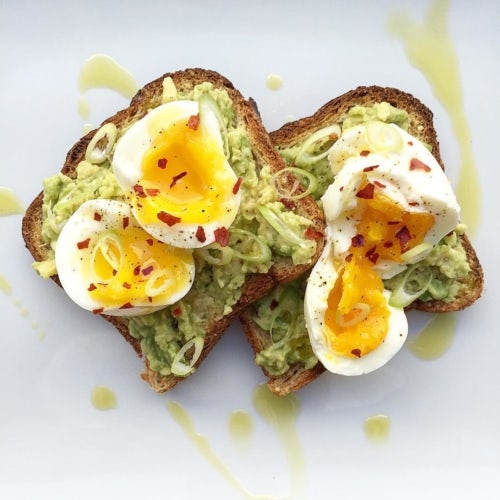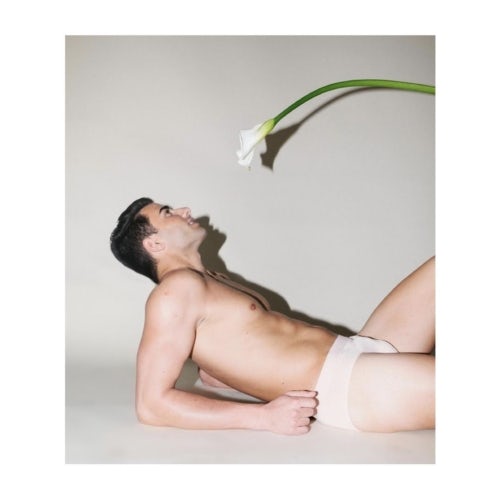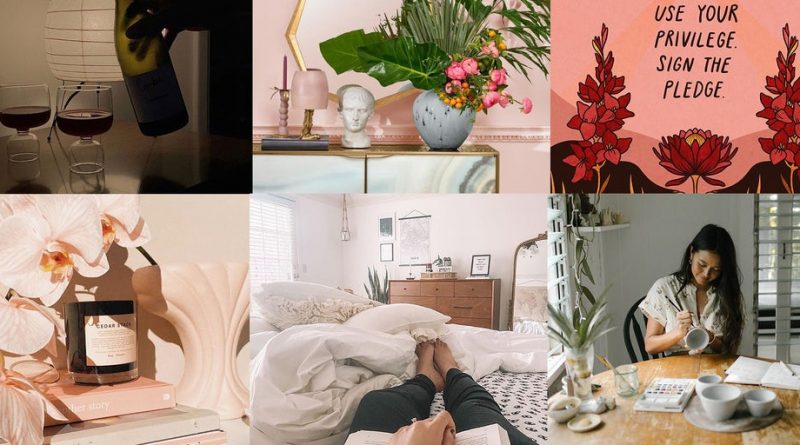The Pandemic Changed the Way People Live. How Can Fashion Adapt? | Intelligence, BoF Professional
NEW YORK, United States — Five years ago, Jennifer Fisher posted a photo of a perfectly seasoned poached egg on her jewellery brand’s Instagram page and suddenly found herself in the spice business.
The jewellery designer received so many messages and comments asking about what was in the seasoning that she decided to launch a side hustle selling her homemade salt mix, which features dill, lemon zest and red pepper flakes. The containers can be purchased on her website alongside $2,000 14-karat gold hoop earrings and pendant necklaces.
That pivot proved fortuitous when the pandemic inspired a global home cooking boom. Salt sales are up 300 percent year-to-date, outpacing a 50 percent increase in the brand’s jewellery sales, Fisher said. The designer is working on a new line of liquid condiments, including hot sauce.

Source: @jenniferfisherjewelry
Fisher isn’t the only designer adapting to unexpected consumer needs and wants. A global health crisis, the ensuing recession and the total state of the world in flux combined have suddenly and irrevocably changed the way people live. To survive and stand out, fashion companies must acknowledge these shifts and adjust what they offer and communicate to their shoppers accordingly.
The Home Opportunity
With consumers stuck at home, fashion brands are scrambling to find a way into the nesting trend that is soaking up a growing share of spending. Sales of home improvement, wellness and cooking products soared during the lockdowns, even as fashion and some accessory categories have suffered. The stock value for e-commerce furniture retailer Wayfair, for instance, grew more than 1,000 percent since March.
When it comes to home goods, even Rihanna seems to be considering getting into the game: On August 12, she filed a trademark application for a new brand called SORRY, I’M BOOKED, which is “intended to cover the categories of tableware, namely forks, knives and spoons.” And earlier this month, Ralph Lauren touted its positioning as a “lifestyle” brand — which sells polo shirts, yes, but also towels, bedding and dinnerware — as a strength during the pandemic.
“We truly have this incredible ability to flex across categories,” Chief Executive Patrice Louvet said in a call with analysts. “And so, we’re leveraging this to put more emphasis on areas that are resonating most with consumers right now,” including home and loungewear.
Many consumers — especially Millennials — were already prioritising their home lives before the global health crisis, spending their disposable income on cookware, candles, yoga accessories and mid-century modern furniture. Hygge, the Danish word for cosy homespun comforts, hit the American mainstream in 2017. Cosiness is its own fashion category these days, especially as people continue to work from their living rooms in the foreseeable future.
Nesting, experts say, won’t be a fad. Millions of former office workers now face the prospect of working from home permanently. This lifestyle requires fewer new clothes, more candles. Some urbanites, in fact, are buying houses in smaller, less dense cities where they have more space to make a home. An April poll conducted by Harris found that nearly 40 percent of respondents who live in urban areas say they would consider moving toward less dense areas. In the Northeast, new home sales rose nearly 90 percent in June, according to the Commerce Department.
“Covid has changed everybody, forever,” said Fisher. “It’s not about that super expensive handbag anymore, it’s, “My dresser is bothering me, maybe I’ll buy a new one.’”
Bloomingdale’s Men’s Fashion Director Justin Berkowitz said that the trends that emerged from the pandemic are informing merchandising decisions for as far out as spring 2021 — that means cosy sweaters, pants with elastic waists and home accessories like the $350 Hyperice massage gun, for which the retailer has seen a stark uptick in sales.
It’s not about that super expensive handbag anymore, it’s, “My dresser is bothering me, maybe I’ll buy a new one.’
“We’re ready and able to acknowledge our customer’s changing daily existence,” Berkowitz said. “How [they] are beefing up and making their home experience better, we’re looking to lean into that assortment.”
Nesting also means that people are shopping locally: instead of stopping by the Herald Square Uniqlo after work, former commuters are instead frequenting the stores and boutiques in their residential neighbourhoods. (An April survey conducted by Ernst and Young found that 34 percent of consumers would pay more for local products in the wake of the pandemic.)
The Rise of the ‘Bifurcated’ Wardrobe
Corporations may be dramatically reducing their office space to allow employees to work from home indefinitely, but professional wear isn’t dead.
Even if companies forgo large headquarters, in-person meetings will still occur once the pandemic is over, said Andrea Wasserman, a retail executive who has worked for Nordstrom and Lord & Taylor. Shopping will be “bifurcated,” she said, meaning that consumers will likely have one wardrobe for “those high-stakes, in-person meetings,” and another for lounging in the home office.
This could be good for the rental market, she added, “especially in a recession.”
According to Berkowitz, new purchases in workwear reflect a shift away from “structured garments” like fitted suits. Instead, people are buying softer jackets and pants that have more of a stretch.
“In menswear, there had already been an overall shift toward a greater form of casualisation well before the pandemic,” he said. “What we’ve seen in the past couple of months is that shift becoming even stronger with this focus on softer garments and things that are more versatile, like a lightweight jacket that someone can wear all day.”
The rotation of day-to-day clothes will be hampered as people are spending most of their time home, but that doesn’t mean consumers won’t splurge on fancy items that make them happy, according to Shelly Socol, co-founder of creative agency One Rockwell.
It’s been a huge awakening that you can live with less.
“There’s almost a sadness to it,” Socol said. “I used to be a big spender, buying clothes for meetings and pitches and conferences … It’s been a huge awakening that you can live with less.”
But this also means the already-burgeoning vacation-wear category may emerge as a category winner post-pandemic, she added, as people look forward to being able to travel again. (A recent American Express poll found that 78 percent of respondents said travelling is one of the top activities they miss the most right now.)
Category Pivot
When the shoe brand LoQ was forced to close its store in Los Angeles, founders Keren Longkumer and Valerie Quant had an unusual problem: what to do with an eclectic collection of bulbous candles and hand-made vases, which they sourced from Instagram and their personal travels, meant to complement their $300 structural sandals and boots in the boutique.
LoQ already sold shoes and handbags online, but it was now forced to take the assortment of curios digital as well. Since the migration, however, the objects have sold so well that the founders plan to expand their offering of home items and keep the category permanent, even after they sell through their original collection.
“We didn’t create this category because of the pandemic, but what people are now consuming is centred around the home,” Quant told BoF. “It definitely feels like the right time.” In particular, glassware, flatware and small items like incense holders are performing exceptionally well, she added.
LoQ has found most customers tend to add home objects to their online carts alongside shoes. Only a minority are turning to the brand exclusively for $15 Milanese wine glasses or Izabel Lam’s wavy bronze flatware sets.
Introducing new categories, nonetheless, can be tricky. LoQ is able to pull it off because its blob candles and glass rings feel authentically in place and look like they were hand-picked by the founders — which they are — according to Socol.
“I don’t think every brand can just launch into home,” Socol said. “Brands have to stay true to who they are and what their consumers want.”
Far-fetched pairings could work if the customer is sold on the connection between two disparate categories. Candle brand Boy Smells, for instance, felt confident enough to launch an intimates brand last year because of what the two categories have in common: spending time at home. Like the line, which goes against at the projected femininity of fancy candles, its underwear is meant to be gender neutral. The items — bralettes, briefs and trunks — use descriptors like “flat front” and “pouch.” The category’s success during lockdown has mirrored that of its candles (up 700 percent in recent months), which still make up the bulk of sales, co-founder Matthew Herman said. Boy Smells is now expanding its underwear assortment, as well as working on a launch for new fragrance and considering new categories down the line like wellness and self-care.

Source: @Boy_Smells
A New Commitment to Social Justice
At the same time consumers are investing more in the home, they’re also thinking about the social impact of the purchases they do make. Fashion brands and retailers must be responsive to this, no matter what kind of product they sell.
Many young people participating in the movement for racial justice are embracing the role of activist for the first time, using their wallets to support the causes they believe in, including purchasing from black-owned businesses and buying small and local over retail chains. Nearly one in every two consumers have changed brand preferences in the weeks following the Black Lives Matter protests, according to a survey of 3,000 Americans published in late July by Ketchum, a communications firm. And between May and July, searches for Black-owned businesses on Yelp increased by more than 7,000 percent compared to the same period last year, the ratings app found.
Retailers have been forced to listen. Companies like Sephora and Rent the Runway have committed to the 15 Percent Pledge, an Instagram campaign that urges retailers to devote at least 15 percent of their shelf space to Black-owned brands.
“I’ve realised that even little things like where I get my coffee matters,” said Kerri Pang, a 27-year-old video producer living in Chicago. “Instead of buying from the coffee shop downstairs, I want to be getting my coffee beans from black-owned businesses.”
“People are wanting to be more comfortable at home, but what they’re also paying attention to is the larger things happening in the world,” said consultant Callia Hargrove, who recently opened a creative agency, Backstory, which specialises in diversity and inclusion.
“The racial reckoning, the political situation in the US and even what’s going on in Lebanon … these are the things that all brands need to pay attention to today and need to be a participant in,” she said.
Related Articles:
Now That Everyone Has Sweatpants, What Else Do They Want to Buy?
No Tourists, No Commuters, No Customers: Thinking Beyond the Shopping District
How Fashion Is Responding to the George Floyd Protests
What Luxury’s Worst Quarter Ever Reveals About the New Normal


